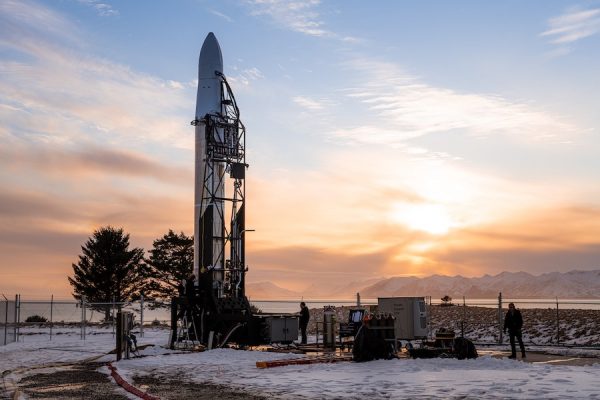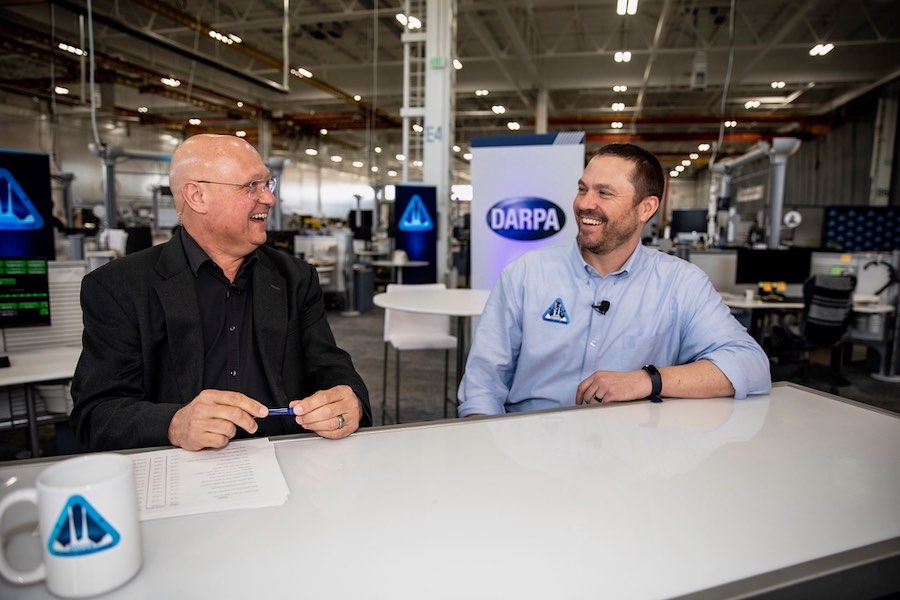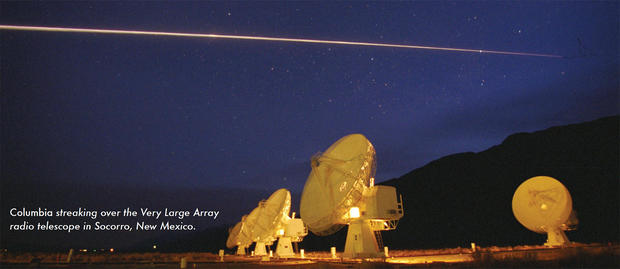After last-minute abort, DARPA Launch Challenge ends without a winner – Spaceflight Now

Astra engineers scrubbed a launch attempt Monday at Kodiak Island, Alaska, to assess troubling data from a guidance, navigation and control sensor on the company’s new small satellite launcher, ending a bid to win up to $12 million in prize money from a U.S. military research agency.
Monday’s countdown was aborted on the final day of a 15-day window set by the Defense Advanced Research Projects Agency, or DARPA, which offered Astra a $2 million prize if it successfully placed three small CubeSats into orbit.
DARPA announced the Launch Challenge in 2018, offering an incentive to commercial launch companies to demonstrate the ability of their orbital-class rockets to the off from any launch site, and on short notice.
If Astra succeeded in reaching orbit on the first launch of the challenge, DARPA would have offered $10 million more to Astra if it could do it again from a different launch pad before the end of March. Part of the challenge was the late notice DARPA gave Astra about the launch site, payloads and target orbit.
For the first launch of the challenge, DARPA gave Astra details about the payloads less than 30 days before the opening of the launch window. And Astra was not allowed to deliver its rocket or portable ground support equipment to the launch site until a few days before liftoff, forcing the company to demonstrate its ability to quickly set up for a flight.
“It was a hard challenge,” said Todd Master, program manager for DARPA’s Launch Challenge. “We set it to be achievable but certainly DARPA holds a bar for really hard tasks that we ask our competitors to do. They got almost there, almost made it to the finish line, didn’t quite make it.
“But we learn a lot from these challenges, and we think that even being able to get to the point we got to will demonstrate to folks that this is something that is something that is right on the cusp of possible, and we anticipate that in the very near future we’ll be able to see those approaches succeed,” Master said.
“We were really hoping to hand over a big check today, but we are very hopeful that the sort of things we put in place and the incentives we provided will continue to spur some innovation and get us to where we want to be,” he said.
Astra was attempting to launch its first orbital-class rocket to meet the goals of the DARPA Launch Challenge. The two-stage vehicle, which stands 38 feet (11.6 meters) tall, was set to lift off from Pacific Spaceport Complex on Kodiak Island, Alaska, with three CubeSats and an on-board tracking beacon.
Astra calls its first satellite launcher Rocket 3, or Rocket 3.0. The specific vehicle slated for Astra’s first orbital launch is named “1 of 3.”
“This was our first test launch of Rocket 3, and we called it 1 of 3 because we believed that it would probably take three launches before we could successfully deliver a satellite into Earth orbit, so we knew that this was a long shot going into it, but understood how strategically important responsive launch was to the government,” said Chris Kemp, Astra’s co-founder and CEO.
Headquartered in Alameda, California, Astra was established in 2016 and operated in stealth mode until early February, when Bloomberg published an exclusive story about the company’s progress and plans.
Monday’s launch attempt came after several delays in late February caused by minor technical issues and bad weather. After poor weather thwarted attempts to launch Astra’s Rocket 3 over the weekend, DARPA gave Astra an extra day Monday to ensure the company had a shot to launch the mission on a day with favorable conditions.

Monday’s countdown appeared to go well until the final minute before launch.
“As we neared the end of the count, 53 seconds before launch, we saw some data from a sensor that really concerned us, and we huddled up as a team and made the call that as wonderful as it would have been to take that check off your hands (speaking to DARPA), we wanted to try to get to orbit in these (first) three launches, and if that data were real it could have caused problem in flight,” Kemp said.
“Our top priority is safety, and anything that we knew that could impact the trajectory of the flight was just totally an unacceptable risk,” he said. “We wanted to make sure we had a full (investigation of the) root cause of it.”
The suspect data came from a sensor in the rocket’s guidance, navigation and control system, according to Astra officials. Kemp said the technical issue was “frustrating” but serious enough to warrant examination.
“Our team now is looking at the sensor and looking at what might have caused the data we saw, so that we can get back out there and fly again,” Kemp said.
Although the Launch Challenge ended without a winner, Master said the program achieved many of its objectives.
Three companies qualified for the competition last year. But Vector Launch, one of the launch firms, ceased operations and filed for bankruptcy last year before ever conducting an orbital launch attempt. The other company, Virgin Orbit, withdrew from the DARPA Launch Challenge to focus on commercial missions, according to DARPA.
“We think we’ve been able to enact from a regulatory standpoint and getting people’s heads around how do you do this quickly, when most folks really seek to this very long in advance, will help us as we look toward future use of responsive space in the military,” he said. “We also think that our push or incentive from the government side for launch vehicle providers to develop systems that are inherently sort of flexible and responsive … has helped us a lot to get closer to that, and Astra has certainly designed a system that appears to be very capable of doing that.”
Astra plans to try again within weeks, DARPA eyes follow-up to Launch Challenge
Astra aims to try again to send its first satellite launcher into the sky within weeks, once engineers determine the cause of the technical issue that thwarted Monday’s countdown.
“We are focused on ‘root-causing’ the anomaly we saw with the sensor,” Kemp said. “Whether it’s an issue with the actual sensor, whether it’s something on the vehicle that we need to better understand, as soon as we address the issue definitively and can get a license and put the regulatory stuff in place, we’ll launch again.
“That probably is not a day or two,” he said. “It’s more like a week or two, but it’s certainly not a month or two.”
The payloads provided by DARPA for the Launch Challenge will be removed from the rocket and returned to their owners, according to Master.
“We put out a call for payload providers and folks who were … looking either for space access on what was, more or less, a free basis, and/or or had a particular interest in responsive space,” Master said.
The payloads selected for DARPA’s Launch Challenge included a Prometheus CubeSat developed by Los Alamos National Laboratory for the Department of Defense, one in a series of Prometheus CubeSats aimed “reducing tasking and data dissemination timelines to provide military operators with tactically relevant information.”
Two identical CubeSats from the University of South Florida were also slated for launch on a mission named ARCE-1.
The twin CubeSats “will fly together in the same orbit and perform inter-satellite networked communications and a high degree of system autonomy,” according to DARPA.
“Our intention is to de-integrate the payloads from the launch vehicle and get those payloads back to the providers,” Master said. “We’re taking somewhat of a risk with a rocket that they hadn’t flown on before.”
When DARPA solicited proposals for CubeSats to fly on the Launch Challenge missions, the satellite owners did not know which rockets their payloads would ride into space.
“So those folks really kind of stuck their necks out in a big way, and we want to afford them the possibility to get their payload back to take another chance to get to orbit on someone else,” Master said. “If they chose to do something with Astra directly, that’s certainly something that they could choose to do. But otherwise, we’re just basically going to de-integrate those payloads and return them to their respective providers.”
Kemp said Astra has a “number of customers” interested in securing capacity on the next launch attempt.
“There’s a big line of folks waiting,” he said Monday evening in a conference call with reporters.
When asked if Astra would webcast its next launch attempt, Kemp said: “I would say that’s probably a yes. We had a pretty positive response.”
DARPA provided a live video stream of Monday’s launch attempt.
Despite the weather woes of the last few days, Kemp said Astra remains committed to launching from Kodiak Island, Alaska. The site has hosted suborbital missile tests, including suborbital test launches by Astra, but the last orbital-class rocket that flew from Kodiak Island took off in 2011.
“We have a long-term commitment to the Kodiak complex in Alaska because frankly it is one of the best places in the country to launch from,” Kemp said. “It’s a pure commercial spaceport that has an incredibly agile and fantastic team up there that’s supported us in previous launches, and in this launch.”
Astra builds its rockets at its headquarters in California, just across the bay from San Francisco. The company is manufacturing its next two rockets for subsequent orbital launch attempts, and Astra intends to mass-produce rockets to loft small satellites for the U.S. military, commercial customers and other clients.
Rocket 3, or Rocket 3.0, can haul around 25 pounds (55 kilograms) of payload into a polar sun-synchronous orbit, according to Astra.
Kemp said Astra would likely need to modify its launch license from the Federal Aviation Administration before its next launch attempt.
“But it is substantially the same license going to the same orbit with the same kind of payload class,” he said.
DARPA does not intend to arrange another Launch Challenge, Master said, but the agency is looking at other ways to demonstrate the capabilities of light-class, responsive satellite launchers.
DARPA says it wants companies like Astra at the ready to deliver military payloads into orbit at low cost on short notice, giving commanders the ability to rapidly deploy orbiting assets or reconstitute communications and surveillance networks.
A responsive, on-demand launch system has been on the U.S. military’s wish list for years. DARPA has sponsored several of the military’s efforts to support development of such a launch vehicle, with little success.
A flexible small satellite launcher would help the military with “things like battlefield reconnaissance, battle damage assessment, things that we use very tactically today,” Master said in a conference call with reporters Feb. 18. “We use those tactically when we have air dominance and air control. It gets a lot harder to do when we’re talking about protected airspace of over other countries or near adversaries who have capability to deny us that.”
DARPA’s Experimental Spaceplane Program, formerly known as the XS-1, effectively ended last month when Boeing pulled out of the partnership. DARPA had selected Boeing to lead development of a reusable hypersonic booster that could take off like a rocket, deploy an upper stage to send a payload into orbit, then return to Earth for a runway landing.
Another DARPA program — the Airborne Launch Assist Space Access, or ALASA, initiative — ended in 2015 without placing anything into orbit. Through the ALASA program, DARPA and Boeing aimed to develop an air-launched rocket that could place a small satellite in orbit after dropping from the belly of an F-15E fighter jet.
DARPA also supported the launch of the first two flights of SpaceX’s Falcon 1 rocket in 2006 and 2007. Both missions failed to reach orbit, and after finally achieving success with the Falcon 1, SpaceX terminated the program in favor of the larger Falcon 9 rocket.
“From our perspective, a lot of the things that we wanted to see in terms of system developments, we saw across a couple of different providers (in the Launch Challenge),” Master said Monday.
“We have seen sort of the evolution of launch vehicle systems that are capable of meeting, or are at least designed to be both flexible, sort of launch from anywhere, and responsive, launch anytime,” he said. “So we know those systems exist, and we feel like providing some incentive as the first government customer to really put money up for somebody to go do that was impactful to the industry.
“How do we continue to pursue this? Trying to pursue flexible and responsive launch is actually something DARPA has been at for quite a while, and hasn’t quite gotten there yet,” he said. “I think this is among the closest that we’ve got.”
While DARPA has been involved in responsive launch initiatives for more than a decade, the military utility of such a system has only increased, officials said.
“I think that’s partly due to the increased capability that you see out of small satellites,” he said. “They’re kind of part and parcel to responsive launch. While responsive launch generally winds up being with smaller vehicles, using small satellites in a way that’s effective for the military is more possible than it used to be in the past.”
He said DARPA is discussing with the U.S. Space Force and U.S. Space Command the possibility of demonstrating a responsive satellite launch capability during a military exercise.
“So could we take a major military exercise, (and) in the course of that exercise actually demonstrate the ability to put something on orbit, in true rapid fashion, where the warfighter is really waiting for it, show that you can deliver new data that didn’t previously exist prior to that exercise starting, and sort of change their perspective on how they use space in a way that’s more tactical?
“It’s in the very early planning stages,” he said. “I think there’s a lot of interest from the rest of the department in doing so, to show that it can actually be implemented and convince users of the value of it, and that would probably be, if we’re going to pursue something else in this arena, what our next logical step would be.”
Email the author.
Follow Stephen Clark on Twitter: @StephenClark1.






